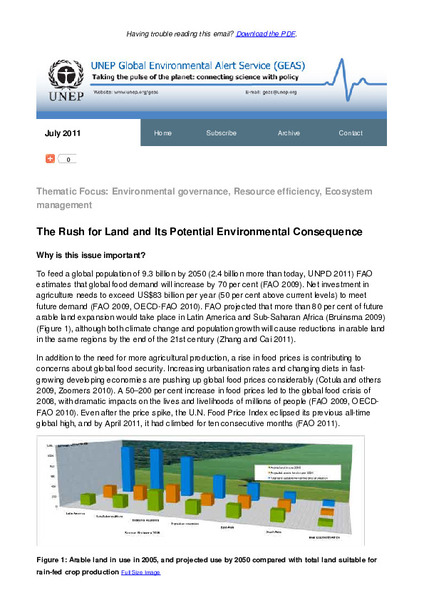| dc.contributor | Science Division | en_US |
| dc.contributor.author | United Nations Environment Programme | en_US |
| dc.coverage.spatial | Global | en_US |
| dc.date.accessioned | 2022-10-20T10:10:51Z | |
| dc.date.available | 2022-10-20T10:10:51Z | |
| dc.date.issued | 2011-07 | |
| dc.identifier.uri | https://wedocs.unep.org/20.500.11822/40888 | |
| dc.description | To feed a global population of 9.3 billion by 2050 (2.4 billion more than today, UNPD 2011) FAO estimates that global food demand will increase by 70 per cent (FAO 2009). Net investment in agriculture needs to exceed US$83 billion per year (50 per cent above current levels) to meet future demand (FAO 2009, OECD-FAO 2010). FAO projected that more than 80 per cent of future arable land expansion would take place in Latin America and Sub-Saharan Africa (Bruinsma 2009) (Figure 1), although both climate change and population growth will cause reductions in arable land in the same regions by the end of the 21st century (Zhang and Cai 2011). | en_US |
| dc.format | Text | en_US |
| dc.language | English | en_US |
| dc.relation.ispartof | UNEP Global Environmental Alert Service (GEAS) | en_US |
| dc.rights | Public | en_US |
| dc.subject | ecosystem management | en_US |
| dc.subject | food consumption | en_US |
| dc.subject | land access | en_US |
| dc.subject | land access | en_US |
| dc.title | The Rush for Land and Its Potential Environmental Consequence - UNEP Global Environmental Alert Service (GEAS) July 2011 | en_US |


